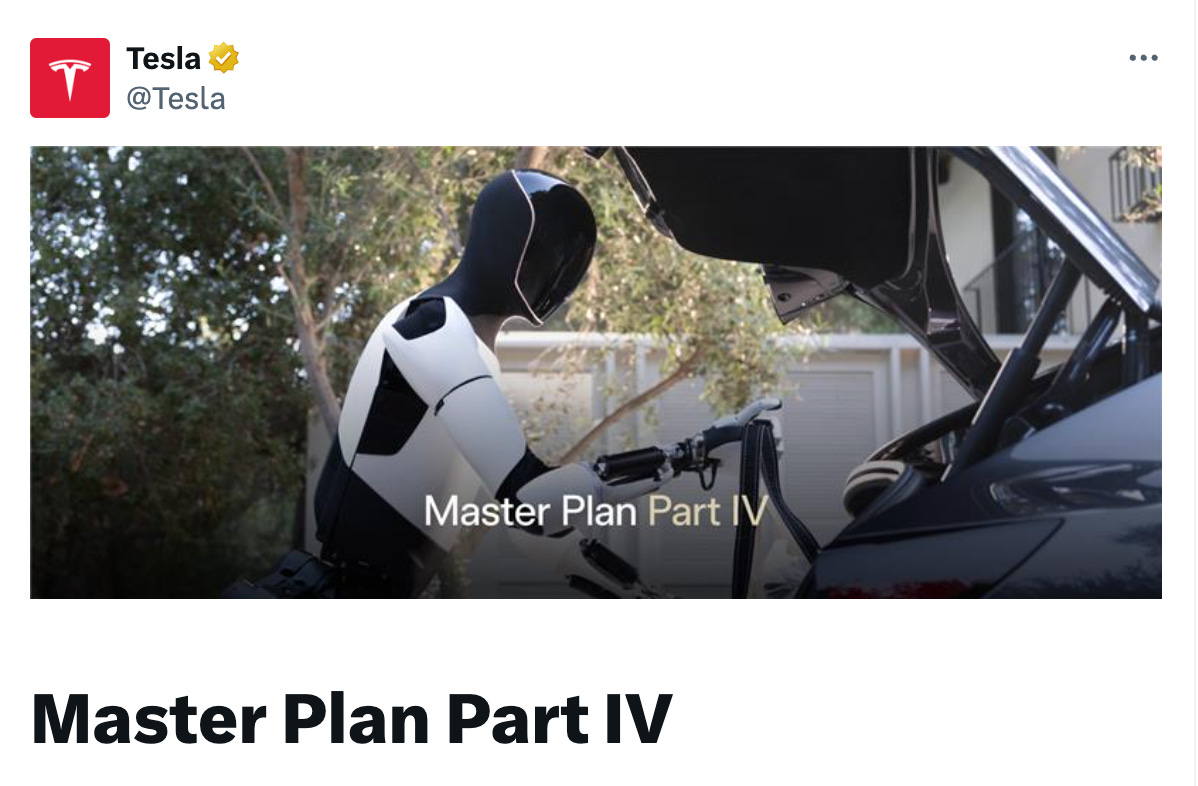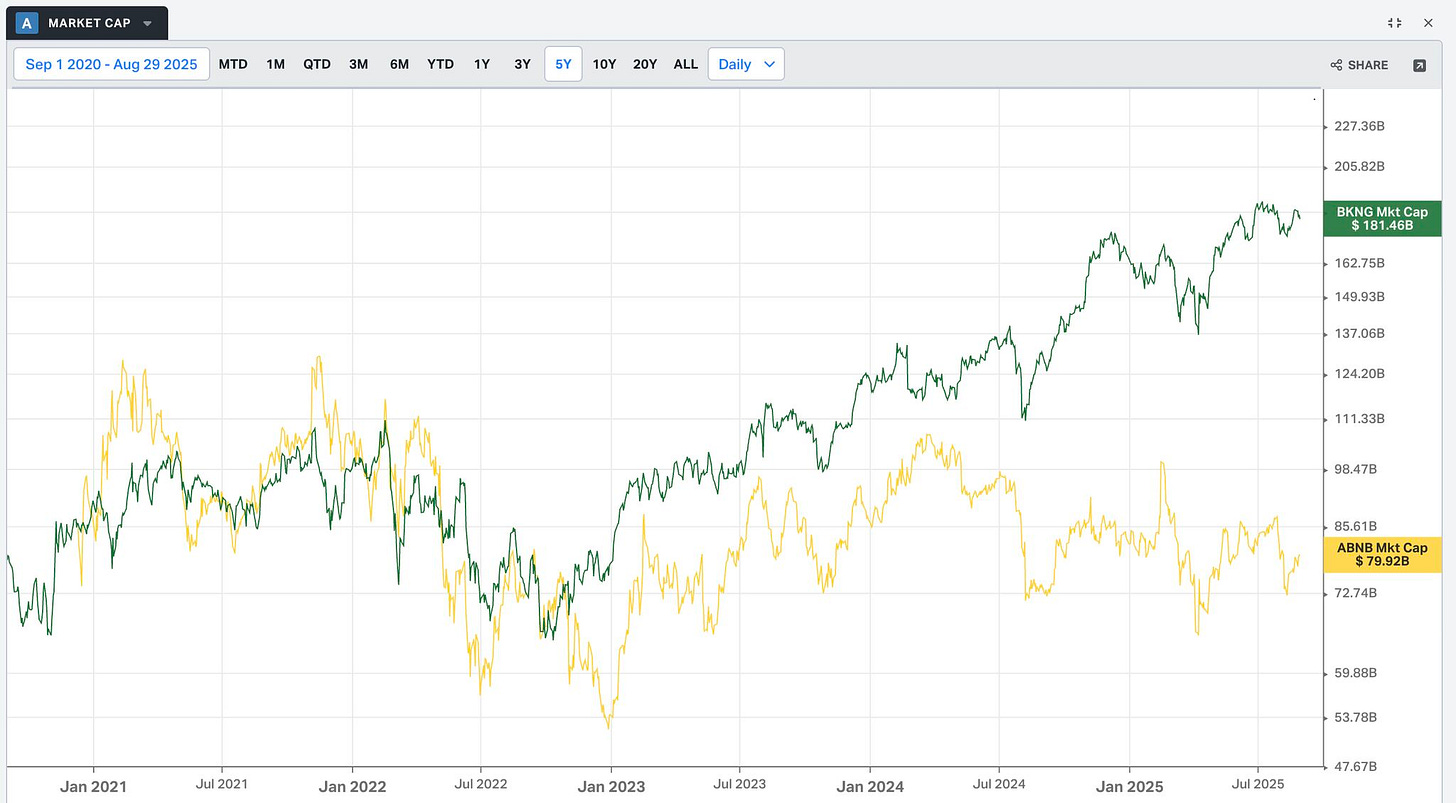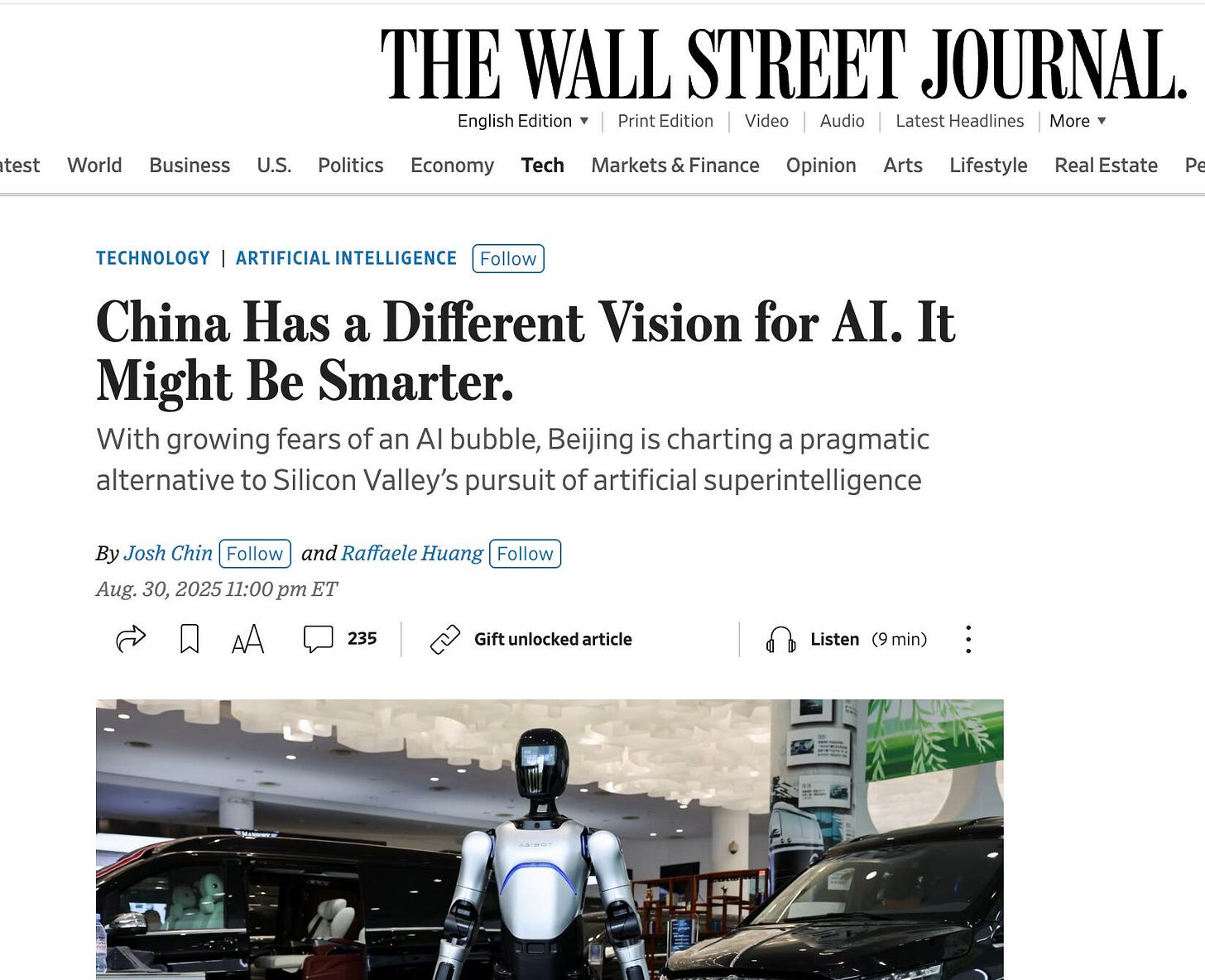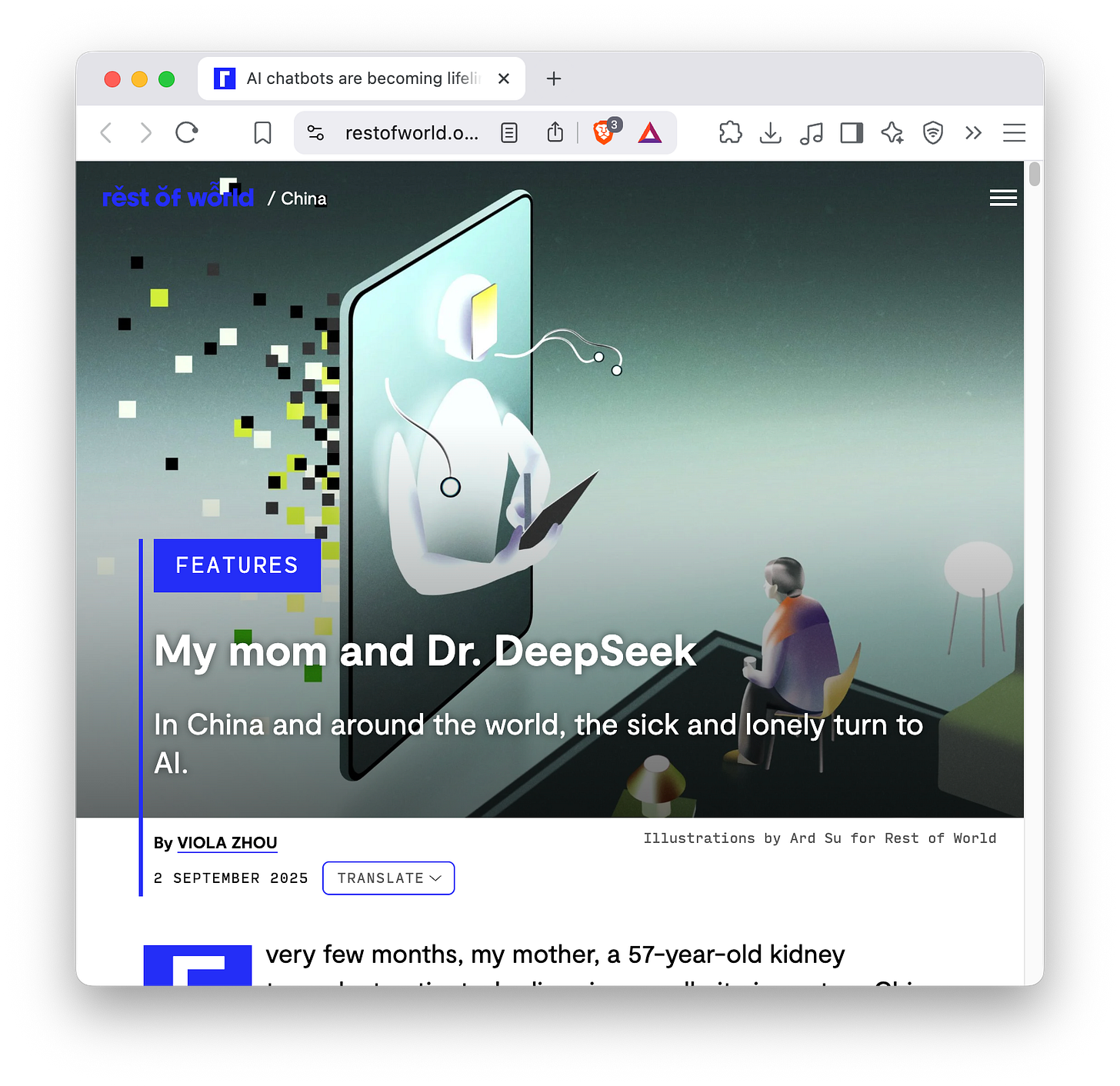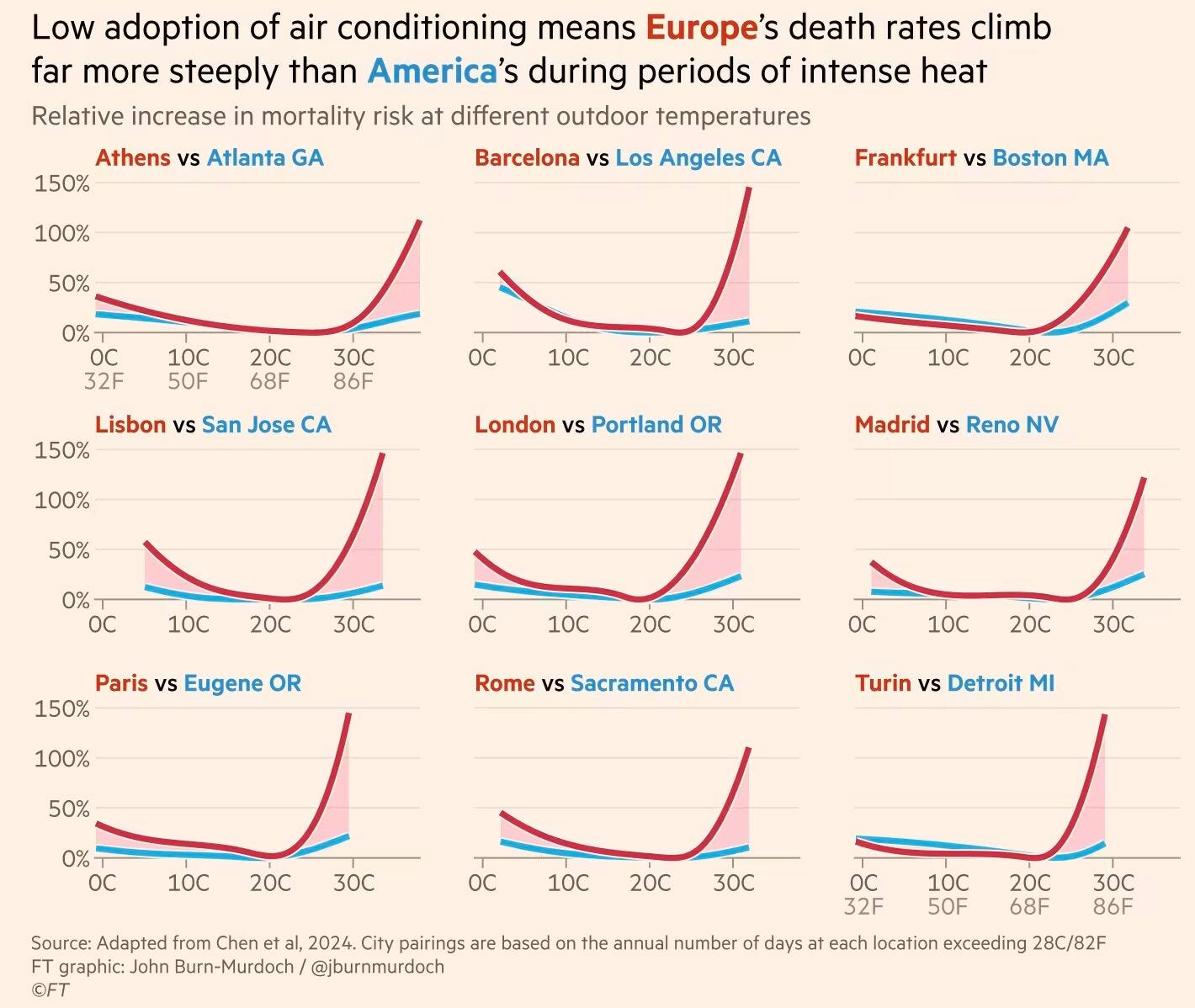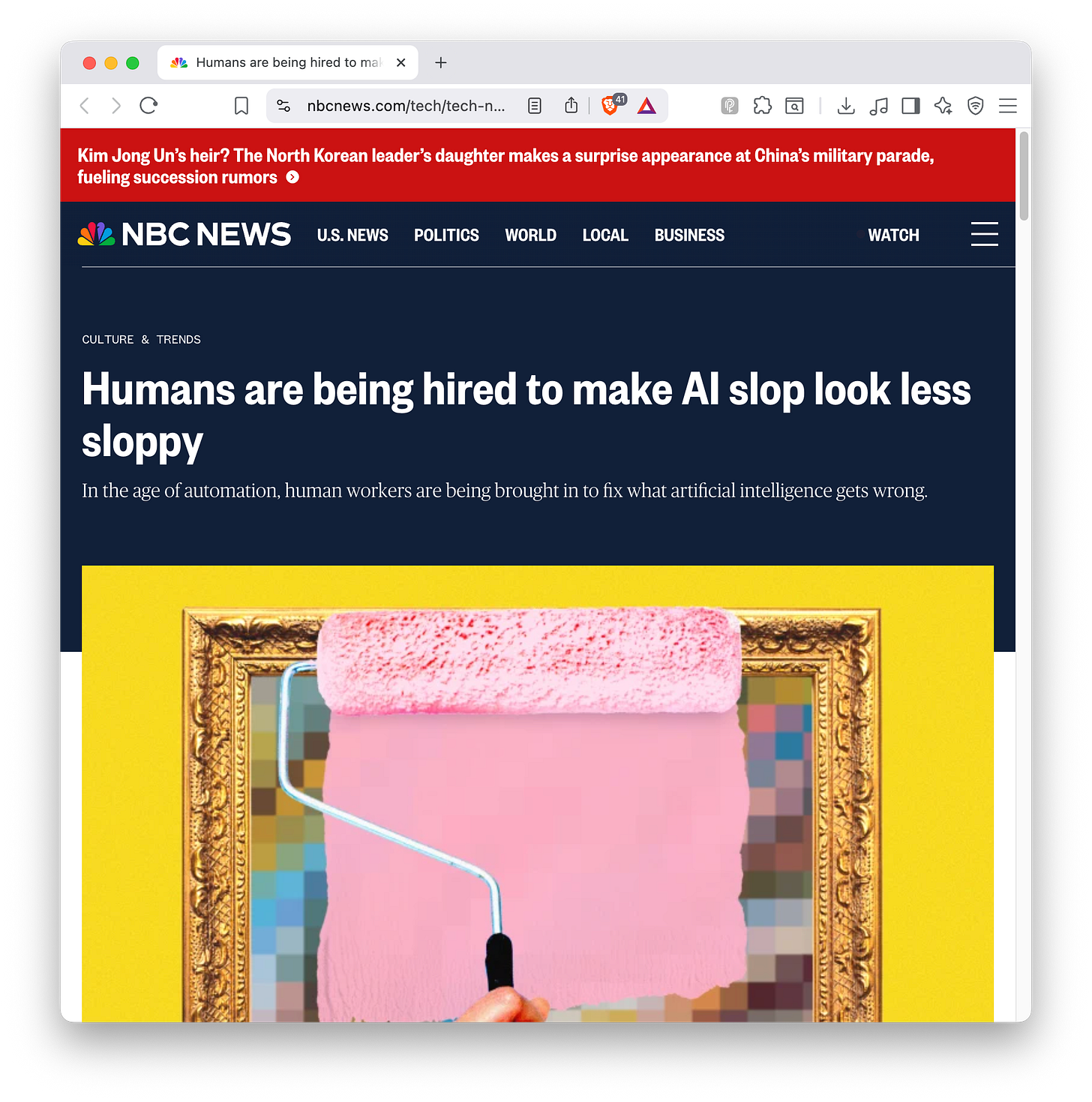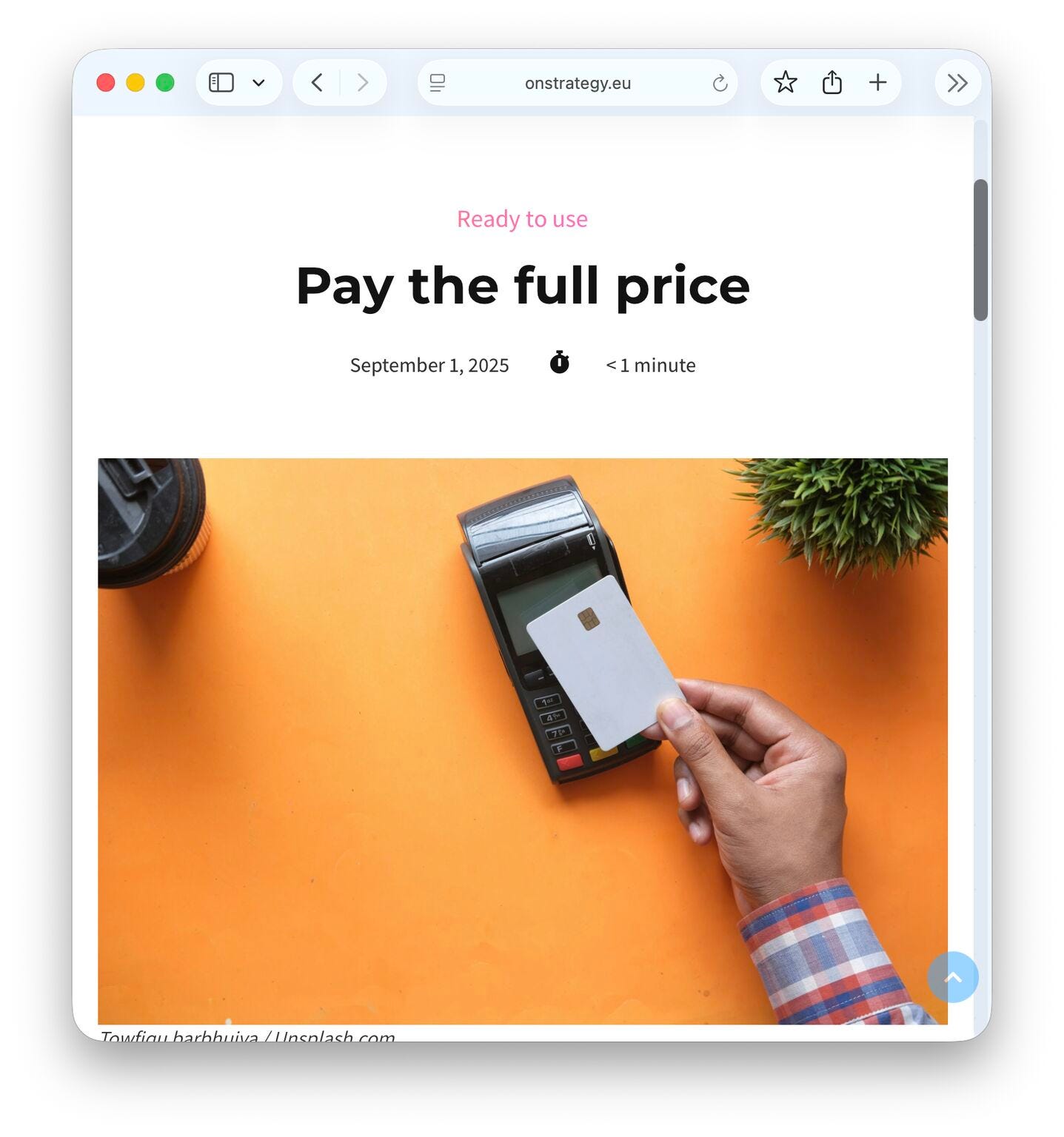(#142) Tesla’s Master Plan Part IV; China’s AI strategy
Beware of AI giving you medical advice
Thank you for being one of the +4,500 minds reading this newsletter
Here is what you’ll find in this edition:
Tesla’s Master Plan Part IV
Apple Intelligence, Meta Talent
What happened to AirBnB valuation?
China’s AI strategy
Beware of AI giving you medical advice
…and more 👇
Onto the update:
Tesla’s Master Plan Part IV dropped this week, promising “sustainable abundance” through AI, robots, and big manufacturing scale. The broad strokes are familiar: growth has no limits if tech keeps advancing, innovation breaks constraints, and autonomy should benefit everyone. It’s utopian, almost poetic, except it reads less like a plan and more like a ChatGPT prompt stuffed with buzzwords. Even TechCrunch and The Verge joked it sounded like AI slop. The paradox is that Tesla’s vision is both inspiring and maddening: audacious enough to shape industries, vague enough to make investors wonder if there’s anything concrete under the hood.
The irony is that earlier master plans actually were specific. The 2006 plan had a clear roadmap: start with the Roadster, use profits to fund the Model S, then scale to the 3 and Y. That playbook worked. But now the company talks about ending scarcity with humanoid robots serving popcorn at Tesla diners . The substance of Master Plan IV is light (no timelines, no numbers, no execution milestones), just an airy promise that innovation will solve resource shortages and free up human time. If scarcity could be eliminated with em-dashes and motivational quotes, Tesla just cracked the code.
Still, you can’t dismiss the underlying thesis. Batteries really did go from “fool’s errand” to industry standard because Tesla pushed. Autonomy, if it ever arrives, really could make transport safer and cheaper. And humanoid robots, while meme-worthy, are at least consistent with the long game: outsource boring and dangerous labor so humans can focus on higher-value work. In that sense, “sustainable abundance” isn’t total fantasy, but just a stretch to claim it’s right around the corner.
The bigger problem is credibility. Tesla still hasn’t delivered everything promised in Master Plan II or III: solar roofs at scale, full autonomy, robotaxi networks. Investors know this, regulators know this, and consumers (who are still stuck with clunky FSD betas) definitely know this. So each new plan that talks about saving humanity without updating progress on the last one feels a little like a corporate escape hatch. Musk’s own admission that the document was “too generic” doesn’t help.
So where does that leave us? Master Plan IV is less a roadmap than a vibes deck: a way to keep Tesla’s stock narrative buoyant while execution catches up. The company is still mostly an EV manufacturer with thin margins and rising competition. But as long as investors believe in the optionality (ie. the possibility that Tesla becomes not just a car company but an AI-and-robotics platform), then “sustainable abundance” works as a stock story, if not an actual strategy. In other words, it’s less about eliminating scarcity in the world, and more about sustaining abundance in Tesla’s valuation. LINK
Apple Intelligence, Meta Talent
Apple just lost its top robotics AI researcher to Meta, along with three more foundation-model engineers headed to OpenAI and Anthropic . That’s not “some attrition”, that’s a jailbreak. The problem is that Apple can’t seem to articulate why its smartest people should stay. Morale is tanking, leadership is debating whether to outsource core AI to Google Gemini, and the phrase “Apple Intelligence” landed with all the excitement of a mandatory iOS update.
Apple, once the fortress of talent retention, is now watching its crown jewels leave for companies that are actually building the future Apple wants to sell. Meta gets the robotics team, OpenAI gets the LLM brainpower, Anthropic gets the scraps, and Apple gets… a share price dip and another round of “what’s next for Siri?” stories. It’s not that Apple doesn’t care about AI, but it’s that its best researchers don’t think it can win. And when your employees believe the competition has a better shot at your own vision, that’s not just brain drain. That’s strategy drain. LINK
AirBnB (yellow) vs. Booking.com (green)
Airbnb has a weird problem: it’s both too big and too fragile. On the one hand, second-quarter revenue rose 13% to $3.1 billion, and profits beat expectations. On the other hand, the management immediately warned of "tough months ahead", thanks to tariffs, regulatory crackdowns, and the $200 million it’s pouring into new services like… haircuts and cooking classes. The stock dropped anyway, because apparently Wall Street doesn’t find "HairBnB" a compelling moat.
The "super app for lifestyle" pivot feels more desperate than visionary. Booking a luchador experience in Mexico City through Airbnb sounds fun, but when the same app charges you $120 in cleaning fees for a two-night stay in Barcelona, the cross-sell starts to feel less like convenience and more like a punchline. Analysts are skeptical for a reason: most people who want a haircut don’t say, "Let me open my vacation rental app".
What makes this funnier is that Airbnb has been here before. Pre-pandemic, it went heavy into "Experiences", only to abandon them when cash flow collapsed and it had to fire a quarter of its workforce. Then it got disciplined, focused on rentals, and, shockingly, made money. Now, after riding the wave of revenge travel, it’s back to chasing shiny adjacencies that add maybe 1.5% to revenue growth in the best case. It’s corporate déjà vu with a Jony Ive-designed interface.
Meanwhile, Booking Holdings is worth more than double Airbnb, because boring is beautiful. Booking sells inventory that scales (e.g., hotels, flights, packages) without pretending it’s going to reinvent haircuts. Airbnb, by contrast, keeps trying to prove it’s a lifestyle brand when what investors actually want is consistent margins. If disruption turns into a punchline, Booking becomes the annuity and Airbnb becomes the meme stock of travel.
P.S. starting this fall I’ll do company insights with a personal decision about their stock: buy/sell/hold
China’s AI strategy
The US is burning billions of dollars and enough electricity to light up Vegas just to maybe, someday, build an AI that can outthink humans. China looked at that and said: "Cool, good luck with your artificial super-God! Meanwhile we’ll use AI to run our factories, grade exams, predict the weather, and maybe fix supply chains". It’s the same playbook they ran with batteries and solar panels: let the Americans invent the shiny prototype, then industrialize, optimize, and scale it until it’s boring, cheap, and everywhere.
The bet is asymmetric. If AGI actually arrives and works, the US gets to declare a Manhattan Project victory and write history books about how they saved humanity (or destroyed it). But if AGI remains hype, or at least very far away (ie. 10 years), China quietly wins by embedding "good enough" AI into every manufacturing line, logistics hub, and export market. It’s a very Chinese kind of pragmatism: why waste trillions chasing the singularity when you can sell robots to Volkswagen and AI pest-control to Brazil right now? LINK
Beware of AI giving you medical advice
China’s health system is so overloaded that a kidney transplant patient will travel two days, queue with hundreds, and get five minutes with a doctor who’s basically speedrunning prescriptions.
DeepSeek enters: an AI chatbot that not only answers her medical questions instantly, but also throws in emojis, encouragement, and diet tips. Suddenly, the human doctor feels like a machine, and the machine feels human. Which is funny, but also a little terrifying because DeepSeek is just as capable of recommending green tea extract as it is of hallucinating a cancer treatment.
The broader implication is that AI is becoming a social infrastructure. Elderly, lonely, or anxious patients don’t want perfect medical accuracy; they want someone (or something) that listens. And if that "someone" also suggests the wrong lab test, well, that risk feels smaller than the guaranteed indignity of a crowded hospital.
I often discuss here about arbitrage, so this can be easily called a "health care arbitrage". You trade clinical certainty for 24/7 companionship. The danger isn’t just that AI will make mistakes (because it's a probabilistic model), but it’s that people will prefer those mistakes to waiting rooms. In the end, the most disruptive thing about AI in medicine might not be the hallucinations, but the bedside manner. LINK
Europe needs a Marshall plan for….Air Conditioning 🤦♂️
Europe loses about 83,000 people a year to heat (!). Not because cooling technology doesn’t exist, but because Brussels and London still treat air conditioning like foie gras: decadent, morally suspect, and something only Americans would be vulgar enough to enjoy. Meanwhile, Lee Kuan Yew literally credited air conditioning as one of the secrets behind Singapore’s economic miracle. Europe? Still holding conferences on passive building design while people die in overheated apartments.
The thing is, this is entirely preventable. Once indoor temperatures climb past 30°C, mortality spikes. Yet the EU’s regulatory reflex is to make AC harder, not easier.... “oat drink” logic applied to cooling. If Europe had treated AC the way it treated renewable subsidies, you’d have subsidies for heat pumps, incentives for efficient retrofits, and grids scaled to handle summer loads. Instead, you get a "don’t worry, just open a window" energy policy.
And yes, AC uses power, but solar is most abundant exactly when cooling demand peaks. The marginal cost of keeping people alive in a heatwave is falling, not rising. Pair air-to-air heat pumps with solar and the net effect can even be emissions-negative, which makes Europe’s allergy to AC not just technocratic stubbornness but lethal stubbornness.
If the US needed a Marshall Plan to rebuild Europe after WWII, then Europe now needs a Marshall Plan for air conditioning. The casualties are piling up, not from bombs but from bureaucratic inertia. LINK
New job: AI fixer
Back on Aleph Business to discuss a new AI labor market arbitrage.
AI was supposed to kill creative jobs. Instead, it created a new one, aka the "AI fixer"
You know the gig: someone prompts Midjourney, gets a six-fingered hand holding a wine glass, and then hires a human illustrator to redraw it. Or a founder lets chat-gpt write their blog post, only to pay a freelancer to make it sound less like… well, chat gpt.
It’s like hiring some consultants to structure a complex derivative and then paying a second consulting company to unwind it so you can actually understand what you own. A whole meta-market of clean-up crews.
The economics are weird. Clients assume "fixing" should be cheaper than creating. But in practice, it often takes longer to salvage AI sludge than to start fresh. It’s the old joke: "I’d love to help you with your mess, but it’ll cost double" 😅
So we’re left with this paradox where AI is giving us different jobs, like curating, repairing, adding the "human vibe" the market still demands.
Maybe the future of creative work isn’t "AI vs. humans", but "AI makes a draft, humans make it matter". NBC, Creative MBA
Principle: Pay the full price
If your friend launches something, don’t ask for a discount.
Be the first to buy. Be the loudest to share. Be the reason they get traction.
Support isn’t saying “let me know if you need anything”.
Support is paying full price without blinking, because you are not just buying a product. You’re voting for their courage.
You’re validating the late nights, the doubt, the leap they took.
Big brands don’t need your support.
Your people do.
So stop asking for the “friends and family” discount.
Be the friend who pays more….because you believe. LINK




